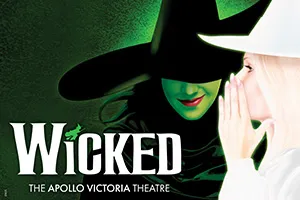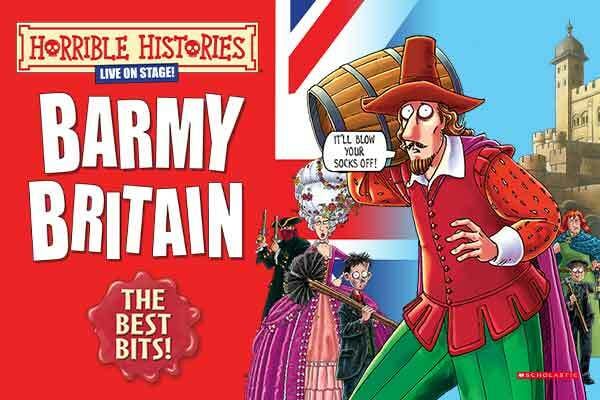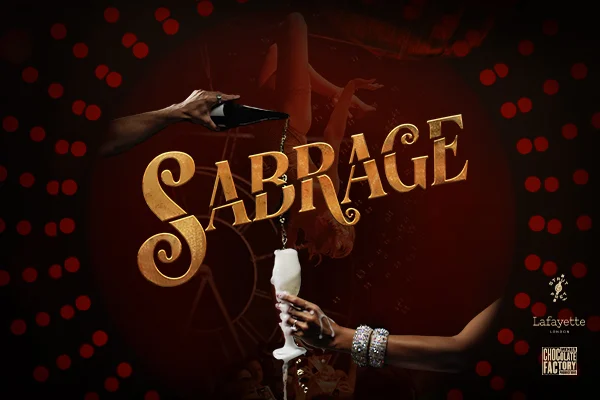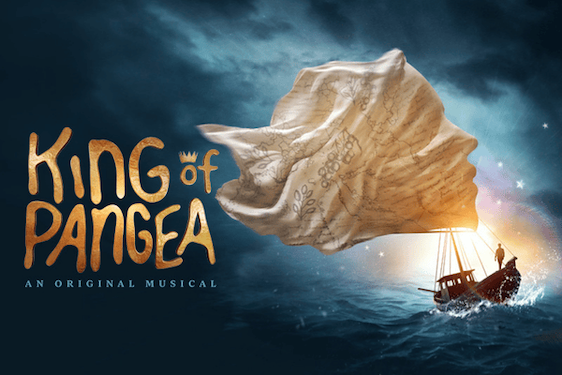It’s that time of year again. Curtains are going up around the country as theatres host that quintessentially British event, the pantomime; a hilarious expression of national eccentricity when a usually restrained adult population let’s it’s collective hair down, using the children as an excuse to delight in fabulous costumes, enjoy excesses of makeup and laugh at ludicrous situations accompanied by often painfully puerile and corny jokes. There are also purely adult versions of these extravaganzas that often stretch the humour from double entendre to the risqué and the downright crude, but all are part of this great institution of seasonal entertainment.
There is nothing like a Dame
No ingredient is more essential to the outrageous mix of characters than the larger-than-life, cross-dressing Dame, a role with which Peter Duncan is very familiar from his many forays into panto. In his current one-man show however, he sets aside the onstage drama and takes us into the post-performance dressing room. The final bows taken, it’s time to remove the layers of makeup, lift the covers of costume, unhinge the hefty headdress and return to reality. Before he completely transitions from one to the other he reminds us of the long tradition in which he stands with a piece from Dan Leno, one of the all-time great dames and an inspiration to to Chaplin and Stan Laurel. He could just as easily give us a turn from the old-time music hall espoused by his parents, who were accustomed to putting on shows and pantomimes in southeast England, but the dame carries far more potential for exploration.
Reminded of what he’d told Radio Times three years ago about those early years he says, ‘I remember being surrounded as a child by the paraphernalia of showbiz, lots of glittery costumes, the smell of makeup and hairspray, pantomime backdrops and quirky props – all the primary colours and the sparkle of growing up in the theatre. A glittering start, you could say’. Ironically he was to tour in Hairspray many years later as part of a life that has developed into a kaleidoscope of performances. Looking into the magical tube one sees the dazzling ingredients that are his many talents reformulate themselves generating ‘Oos’, ‘Ahs’, ‘Ohs’ and ‘Mms’ as every turn reveals another side of him.
Yet his has not been a neatly charted course or a planned progression of career moves up a singular ladder. Rather, he seems to have clambered up scaffolding in various directions and in many ways around an edifice of theatrical life always seeming secure while never denying his sense of adventure. He left school at the earliest opportunity, but perhaps surprisingly it was through the inspiration of his teachers, rather than his parents, that he first took to the stage. He’s still there now, aged sixty-four, but the range and diversity of what he’s done since he first started treading the boards is striking.
Even his training was less than conventional. His first engagement was as Jim Hawkins in Treasure Island at the Mermaid Theatre, an indicator of what was to follow further down the line. He enrolled at the Italia Conti School, but his attendance was somewhat intermittent; not out of any reluctance to apply himself to study but rather because too many opportunities kept presenting themselves. Many of these came from the National Theatre, led at that time by Laurence Olivier. Without realising the enormous stature that would accrue to those around him, he worked for two years with enormously talented people who would become some of the biggest names in twentieth century theatre. ‘It was like joining an elite university theatre,’ he says, ‘and a world so different from my parents’ music hall summer seasons.’
It was also the start of a lifetime in entertainment that would take many forms. During the 70’s that included a mix of theatre and television work that has continued ever since. Neither has he omitted film from his career with six appearances to date ranging from a somewhat gruesome demise as Young Treeman in Flash Gordon and playing himself in Life After Flash over thirty years later. The figure is still lurking around. He informs that ‘the tree monster will be seen in the latest series of Through the Keyhole.’
It is impossible to write about Peter Duncan without mentioning Blue Peter. The series is a remarkable piece of children’s television that’s been running since 1958. Duncan joined it in 1980, with some misgivings regarding its place in his developing career. He need not have worried. His success was immediate and thrust him into the lives of families around the country. He related effortlessly to the young audience and stayed for four years, only to be brought back in 1985 for another year, when his successor didn’t work out too well. For the generations who have grown up with the show it will always be remembered with great affection and Duncan’s name is forever tied to it. He sometimes ruefully admits that many people imagine it’s the only job he ever did, but it provided a gateway to later activities. He became known for the daredevil exploits which the show had featured since its inception and he clearly relished them. They paved the way for his own series, Duncan Dares, that focussed exclusively on extreme activities.
The 80’s also saw the start of his family with spouse Annie Francis. They have four children: Lucy (1985), Katie (1987), Georgia (1989) and Arthur (1991). Continuing the Duncan tradition of theatrical exposure Lucy, made an appearance on Blue Peter aged one just one day old! That alone was enough to endear him to the hearts of the nation. But more was to come. Physical activity featured increasingly in his life during this period and created further openings. In 1981 he ran in the first London Marathon and has done several since. In 2007 he took part in Channel 4’s The Games and seven years later reached the semi-final of BBC1’s Tumble, which allowed him to develop a wide range of acrobatic skills.
He made his mark too in musicals, most notably taking on roles in Barnum and Me and My Girl. It was another move that paid off. It was a in show about Charlie Chaplin called The Little Tramp, however, that he was spotted by Cameron Mackintosh. He was subsequently cast as Denry Machin in the 1994 revival of The Card and received an Olivier Award nomination for Best Actor in a Musical. As the decade progressed into the next century he continued the mix of music, dance and comedy with numerous shows and pantomimes in a variety of roles. He also revealed his classical capabilities, playing Macduff in Macbeth at the Regents Park Theatre, and his body in a nude scene in Funny Peculiar at the Belfast Opera House.
Next he was attracted to directing, producing and writing his own versions of shows, for which he created his company, Here's One I Made Earlier, a line he must have said many times over the years. He is now known for productions such as Erik the Viking, Robin Hood, Cinderella and Peter Pan in venues around the country that include, Hackney Empire, Oxford Playhouse and the Broadway Theatre Catford.
For the 2018 season he has produced Dick Whittington at the Lighthouse Theatre, Poole and written and directed Aladdin for the Everyman Theatre, Cheltenham.
His celebrity status and particularly his appeal to young people and families was recognised when, in 2004, in a departure from tradition, he was appointed Chief Scout, a move described by The Scout Association that was intended ‘to modernise and to bring a fresh image’ to the Association. It proved successful, with his five-year tenure bringing about significant increases in membership and volunteering. The position meant a lot to him and his family and there was one very special period during his tenure. He explains, ‘My wife was a social worker when we married, so I have always had a strong social conscience and to lead the celebrations of the scouting centenary worldwide in 2007 was a great honour’. The post also earned him the Gold Blue Peter Badge, the highest honour awarded by his earlier show.
Duncan believes it was another activity along with his Blue Peter credentials that drew the attention of the Scouts. From 1999 to 2005 the Duncan family went on backpacking trips around the world which he filmed and made into three TV series: Travel Bug, a round-the-world tour, Chinese Breakaway and Arthur's Trip to India, narrated largely by his son. It’s not the only way he’s chosen to work with his family. He gives what time he can to supporting Annie, now an independent midwife, who helped set up and is Chief Executive of Neighbourhood Midwives, an ‘employee-owned social enterprise’. Family collaboration conveniently brings us back to the The Dame, which was written by his middle daughter, Katie.
It’s a poignant tale of Ronald Roy Humphrey, who has returned to the northern seaside town where he grew up and over the years has become something of the classic sad clown. As the layers come off he reveals more about the person beneath the costume and exposes the demons that forced him away many years ago. Tales of being abandoned and abused are interspersed with lighter reminiscences from the performances that became his life, aided by his friend the whisky bottle. As I said in my five star review of the play in Edinburgh earlier this year, the writing ‘flows and eloquently digs into the depths of despair yet revels in the heights of adulation. Duncan knows how to play both. His years performing such roles and immersion in pantomime shine through’. In an update he says, ‘The show has been lengthened for its run at the Park Theatre and the narrative now tells a tale of redemption and the story has a powerful revelation at the end based on true life events’. And there’s nothing like a redeemed Dame. Oh yes there is!


















